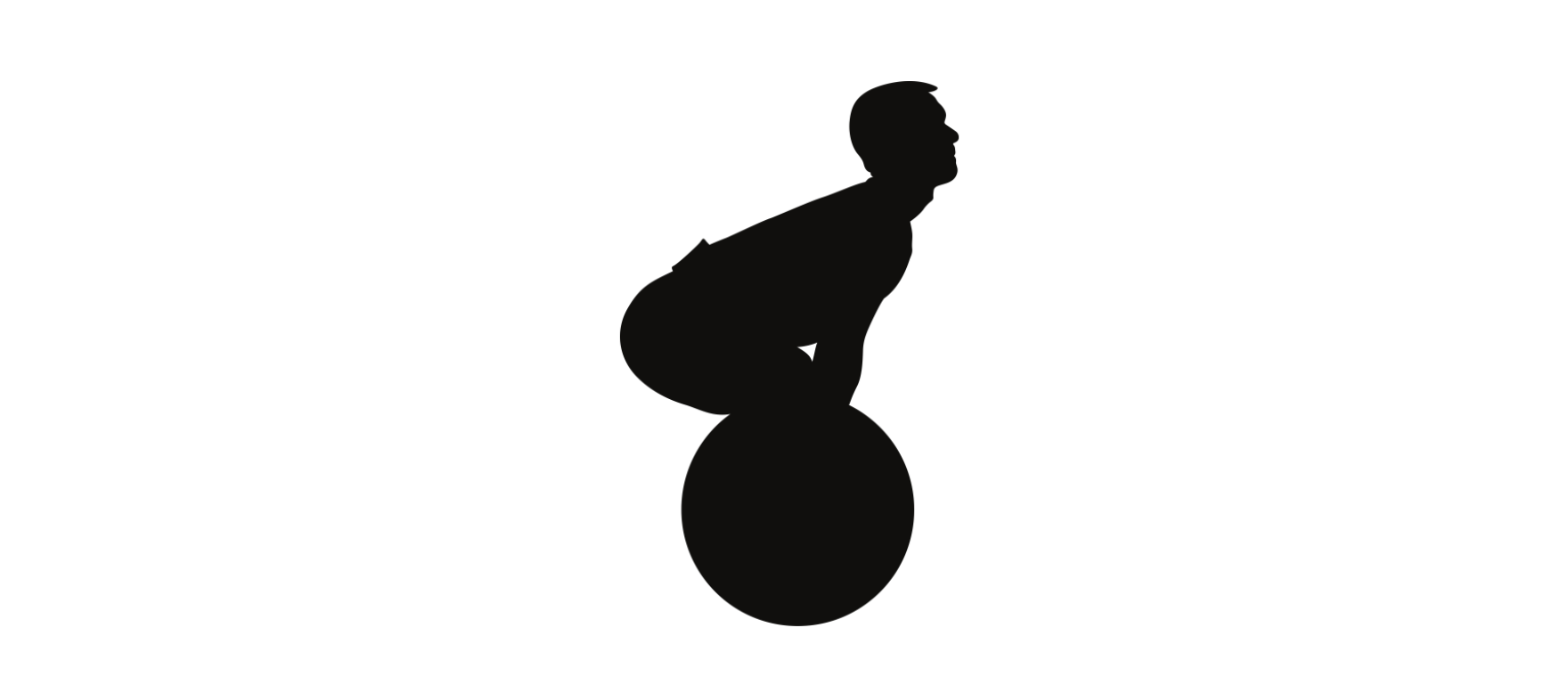The power clean is one of the best exercises to develop explosive strength and power. So good, in fact, that they are used by 88% of strength and conditioning coaches in the NFL, 95% of coaches in the NBA, and 100% of coaches in the NHL (Ebben 2001, 2004, 2005).
There’s also a bunch of research out there showing that they help to improve key athletic qualities such as sprint speed and vertical jump height (Tricoli 2005, Channell 2008).
And yet very few people outside of elite sport ever do them, why is that?
The main problem is that they can be a little tricky to learn on your own, which puts a lot of people off of trying. To help with that, this article provides a simple, step-by-step learning sequence that you can use to master the technique and start reaping the benefits.
We’ll also be looking at some of the most common mistakes to avoid, as well as some useful assistance movements.
If you’re willing to put in the work, there’s absolutely no reason you can’t implement power cleans into your training programme to develop strength, power and athleticism.
Let’s get started, shall we?
Step By Step Power Clean Guide
- High Hang Power Clean
- Knee Hang Power Clean
- Power Clean
- Common Power Clean Mistakes to Avoid
- Power Clean Assistance Movements
So many of the ‘how to power clean’ tutorials I see online are ridiculously long and include pages upon pages of complex terminology on positions and biomechanics.
Now, if you’re a geek like me who happily reads 300-page weightlifting textbooks for fun, you might love that stuff, but if you’re more like the athletes that I coach, you probably want a quick, easy-to-follow plan that you can put into action without needing a PhD in liftology.
The method I propose has 3 steps. That’s it. And each step builds on the last.
First: High Hang Power Clean
You’ll start in what’s known as the ‘high hang’ or ‘power’ position. New terminology aside, this is just your basic athletic stance, exactly the same as if you were priming yourself to jump. So you’ve got a slight bend at your hips, and a little more at your knees.
You’ll have your feet about hip width apart, and you’ll be gripping the barbell at a width that means the bar rests on your upper thighs when standing.
It can also help to use what’s called a ‘hook grip,’ in which you try to wrap at least two fingers around your thumb.
From here, you’re going to “jump and catch,” receiving the barbell on your shoulders in what’s known as the ‘rack’ position.
That’s it.
Just jump and catch.
Keep the weight light, and put in plenty of reps.
Power Clean drill 1
Perform 6 sets of 6 reps practicing the movement outlined above
And as you practice, aim to keep the bar close to your body (almost like you’re trying to lift up your t-shirt with the bar) and receive it smoothly onto your shoulders.
Don’t overthink it. It’s okay for it to feel weird. Any time you learn a new movement there’s a period of learning required. Just focus, put in the reps, and aim to improve each session. I promise it will start to feel way more natural over time.
Knee Hang Power Clean (Just below Knees)
For this exercise, all you’re going to do is hinge more at the hips so that the bar moves to a start position just below your knees. You’ll know if you’ve found the right start position because your shins will be pretty much vertical.
*Pro-Tip, to hinge at your hips, just imagine pushing your butt back towards the wall behind you.
From your new start position, slowly come up until you hit your power position/high hang position (knees and hips slightly bent), then ‘jump and catch’ just like you did in the first exercise.
Keep the weight light and put in plenty of reps.
Power Clean drill 2
Perform 6 sets of 6 reps practicing this second movement.
Still aim to keep the bar close, still aim to receive the bar smoothly on your shoulders. If you feel like the bar is ‘crashing’ onto your shoulders, you probably need to rotate your elbows a bit sooner.
The fundamentals of this movement are the same as before, you’re just starting in a slightly lower start position.
Power Clean
For the last exercise in the sequence, all you’re doing is taking the bar’s start position from just below the knees to on the floor. To do this, all you need to do is bend your knees. I really recommend watching the video to get a visual for this.
From there, slowly come up until you hit your power position/high hang position (knees and hips slightly bent) then ‘jump and catch’ exactly like you did in the first exercise.
Over time, as you get used to the movement, you’ll be able to speed everything up, but for now, focus on hitting the correct positions that you learnt before.
See the magic here? Every exercise in the progression builds on what you already know. There’s no need to overthink and overanalyse it.
Keep the weight fairly light and put in plenty of reps, I recommend something like 6 sets of 3 for these as they’re a bit more work than the hang versions you’ve just done.
Power Clean drill 3
Practice 6 sets of 3 reps of the power clean from the floor drill outlined above.
Common Power Clean Mistakes to Avoid
Honestly, if you follow the steps above in sequence, and practice them a few times per week, most problems will tend to sort themselves out on their own. However, there are a few common mistakes that I’ve seen lifters make, so it’s best to be aware of them.
Mistake #1: Trying to ‘Jump and Catch’ Way Too Early
In order to properly ‘jump’ you have to actually be in the high hang/power/athletic position (knees and hips slightly bent). It’s tempting to try and rush the movement when the bar is near your shins or knees (often because these feel uncomfortable) but don’t. It reduces your maximal power, and often results in you jumping forwards. Take your time, be patient and wait until the bar is in the power position.
Mistake #2: Using Your Arms Wrong
When done properly, your arms should be loose (almost like ropes) as you move the bar up your legs and as you begin your jump. Then they should be active as you use them to keep the bar close to your body and guide it into the receiving position on your shoulders.
If you try and use your arms too soon, you’ll end up out of position and limit your power production. And if you forget to use them to receive the bar you’ll find the bar ends up too far away from you.
So remember, jump first, then arms.
Mistake #3: Starfishing (Moving Your Legs Out Too Far)
As the weight of the power cleans gets heavier, a common mistake is to keep on jumping your legs wider and wider in order to catch the bar. In reality, you should be pulling under the bar somewhat, aiming to have your feet in a position where you could descend into a front squat if necessary.
Reduce the weight and focus on good footwork.
Mistake #4: Putting Too Much Weight On The Bar
By far and away, this is the single BIGGEST mistake I see, and it’s often the cause of the first 3 mistakes I’ve mentioned.
I’m willing to bet that for your first driving lesson you didn’t just hop in an F1 car and tear round the Monaco grand prix, right? The same goes for weightlifting. You can’t just load the bar as heavy as possible and expect magic to happen. You’ve got to put in the work, learn the basics and work on your technique with weights that you can comfortably handle.
Power Clean Assistance Movements
For me, the power clean doesn’t actually require all that many assistance exercises. For the most part, it just requires regular practice and a bit of patience. With that said, there are two exercises that I’ve found helpful for some athletes.
#1 Front Squats
These serve multiple purposes. First, they help to reinforce a strong ‘rack’ (bar on shoulders) position. Second, they help you get used to the foot position you should be catching power cleans in. And third, they build leg strength in a way with great carryover to the power clean and clean movements. 5 sets of 3 reps towards the end of a training session is common for my lifters.
#2 Clean Deadlifts or Pulls with a Controlled Eccentric
Just like before, these exercises serve multiple purposes. First, they help to reinforce the correct positions for the power clean, and second, they strengthen the muscles required to maintain those specific positions. 5 sets of 3 reps right after power clean practice usually does the trick.
Check out this article on how to perfect your Sumo deadlift
Final Thoughts on Learning How to Power Clean
So there you have it, you’ve got a simple, step by step process that you can put into action today to learn the power clean and start reaping its benefits. You also know the four common mistakes to be wary of, as well as two of the most useful assistance exercises to accelerate your progress.
Now it’s just a matter of regular practice and patience. Don’t go getting frustrated and giving up if you’re not acing them straight away. Give yourself a few weeks to dial in the movements. Put in the work. Achieve the rewards.
Go get after it.
Alex
Owner and Coach, Character Strength & Conditioning
British Weightlifting Tutor & Educator
References/Further Reading
Channell, B., Barfield, J., Effect of Olympic and Traditional Resistance Training on Vertical Jump Improvement in High School Boys, Journal of Strength and Conditioning Research: September 2008 – Volume 22 – Issue 5 – p 1522-1527. 2008.
Ebben, W., Blackard, D. ‘Strength and conditioning practices of National Football League Strength and Conditioning Coaches.’ Journal of Strength and Conditioning Research. 2001, 15(1):48-58] 2001
Ebben, W., Simenz, C., Carroll, R. Strength and conditioning practices of National Hockey League Strength and Conditioning Coaches. Journal of Strength and Conditioning Research. 2004, 18(4), 889–897, 2004
Ebben, W., Simenz, C., Dugan, C. Strength and conditioning practices of National Basketball Association Strength and Conditioning Coaches. Journal of Strength and Conditioning Research. 19(3), 495–504, 2005
Tricoli, V., Lamas,L., Carnevale, R., Ugrinowitsch, C.Short-Term Effects on Lower body Functional Power Development: Weightlifting Vs. Vertical Jump Training Programmes. Journal of Strength and Conditioning Research, 19(2), 433–437. 2005 [link]
Page Reference
If you quote information from this page in your work, then the reference for this page is:
- Parry, A. (2021) How to Power Clean Guide – Master Your Technique. Available from: https://sportscienceinsider.com/how-to-power-clean/ [Accessed dd/mm/yyyy]

Alex Parry
Alex is the Owner and Head Coach of Character Strength & Conditioning, and specialises in strength & power development for athletes.
He currently works as a Tutor & Educator for British Weightlifting, and has previously delivered S&C support to gymnastics and swimming talent pathways.
